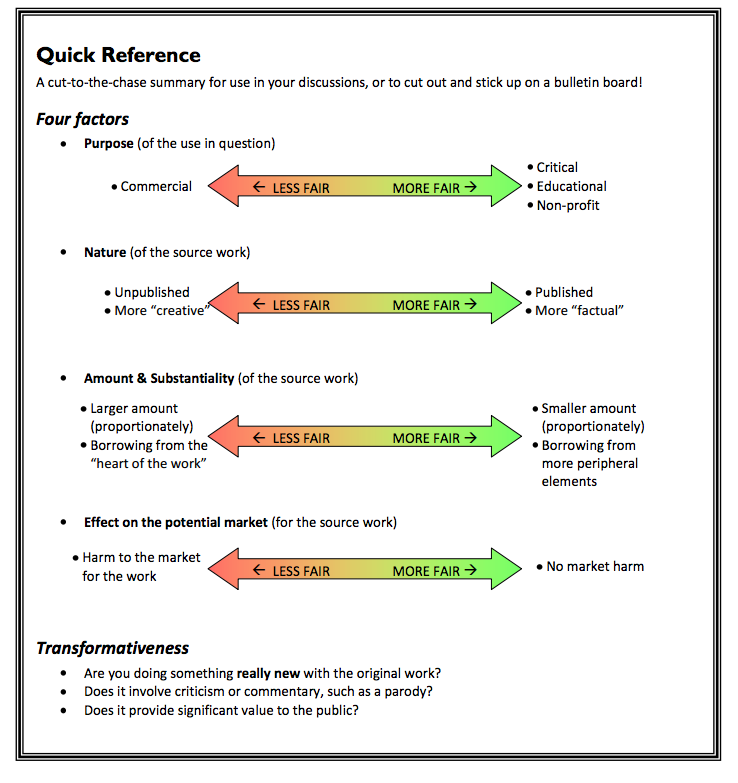
The following four factors are used to determine if a use is fair:
* Not all uses in an academic context are automatically considered fair use!
These facts work together to create a large picture and it is always the responsibility of the user to think critically about their usages and make decisions based on the above. For more information about what each of these factors means click here.

Image licensed under the Creative Commons and adapted from here.
Fair use is a concept embedded in U.S. law that recognizes that certain uses of copyright-protected works do not require permission from the copyright holder. (See Title 17, section 107)
Notwithstanding the provisions of sections 106 and 106A, the fair use of a copyrighted work, including such use by reproduction in copies or phonorecords or by any other means specified by that section, for purposes such as criticism, comment, news reporting, teaching (including multiple copies for classroom use), scholarship, or research, is not an infringement of copyright...
This is one of the major exceptions to the copyright laws because of the perceived benefit of the use of the material.
Fair Use in Academia
The Fair Use Doctrine is one of the most important exemptions to copyright protections for educational settings, allowing many uses of copyrighted works for the purposes of teaching and research. The complexity of fair use and its importance in academia make it imperative that every member of ENC understands how to make judgments concerning fair use.
Many believe that Fair Use protection allows users in an academic setting free range over the use and distribution of materials, but this is not the case!